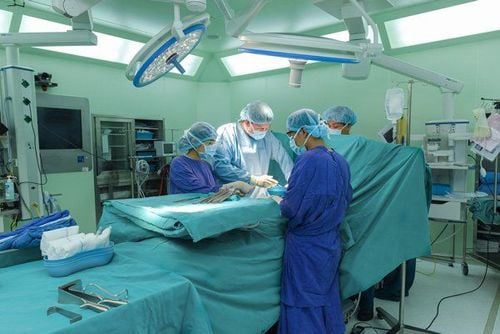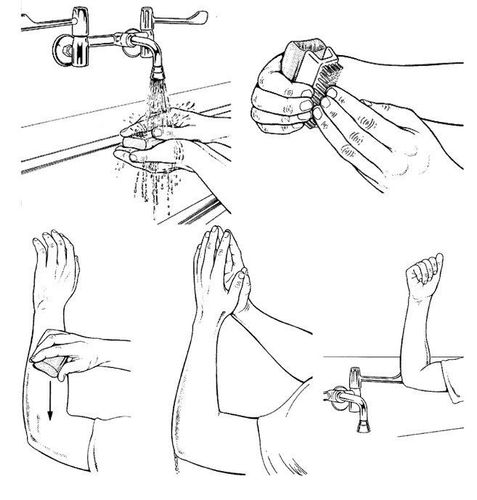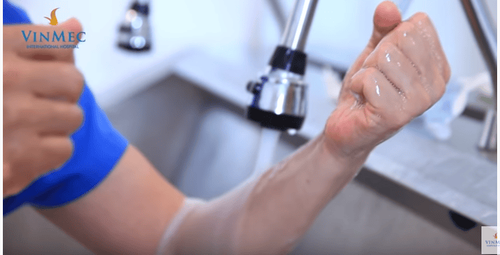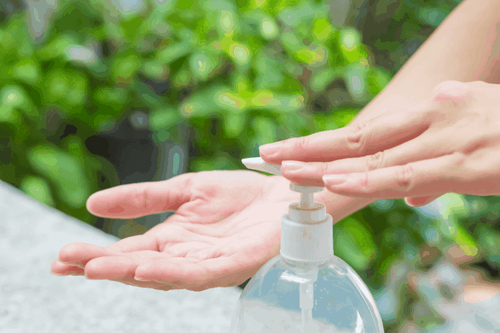This is an automatically translated article.
The article was professionally consulted with resident Doctor Le Thanh Tuan - Department of General Surgery - Vinmec Nha Trang International General Hospital.For patients with surgical interventions, the risk of infection is very high, especially in the case of surgery. Therefore, medical staff working in the operating room or performing or assisting with the above interventions should wash their surgical hands to reduce and prevent the growth of bacteria on the skin if the gloves are unfortunately torn. .
1. Meaning of surgical hand washing
Bacteria exist everywhere in large numbers, diverse in species that humans cannot observe with the naked eye. Therefore, infection when surgical intervention in medicine is always focused.
According to research, surgical hand washing technique, especially preoperative hand washing has the ability to reduce and prevent the growth of bacteria on the skin if unfortunately the glove is torn. From there, it is possible to limit the infection of the surgical site; increase the efficiency of postoperative recovery; avoid complications related to infection for the patient and the risk of disease for medical staff.

2. Surgical hand washing instructions
2.1. Requirements to be achieved Hand washing should be performed from fingertips to elbows with soap and disinfectant prior to surgery. There is no general rule for how long the best surgical hand washing time is. However, it may depend on the antibacterial products of the hand sanitizer that the surgeon is using. Long time hand washing can cause bacteria in the subcutaneous layer to appear, which will have the opposite effect. Therefore, according to the regulations of the Ministry of Health, the mandatory surgical hand washing time is 5-6 minutes. The time to wash your hands depends on the number of times you brush your hands a day, the hand sanitizer and the method of washing your hands.
Wash off all dirt and bacteria on the surface of the skin of the hands so that when operating on wounds and incisions, the patient is not infected by the operations of the surgeon, procedures such as changing dressings or injections. ... Minimize the secretion of secretions such as sweat or sebaceous glands of the hands by mixing in hand washing solutions, soaking hands in skin-tightening agents to shrink the glands containing Tanin.... Or you can use different types of face coverings like Vaseline... to cover the pores so that the fluid cannot be secreted during surgery for the patient. The requirement of each method or surgical hand washing solution before surgery is not to harm the skin of the hands such as corrosion, blistering, dry burning, etc., so the skin of the hands must be protected before the procedure.
2.2. Surgical hand washing procedure The surgical hand washing procedure includes:
Step 1: When washing hands before surgery, the person performing the procedure must remove all jewelry on their hands (note: Fingernails must be cut short; When washing surgical hands, it is necessary to rub gently, because brushing too hard will damage the epidermis causing bacteria in the subcutaneous layer to appear, gentle rubbing is enough to wash all bacteria on hands). Then, roll up your sleeves past the elbows.
Step 2: Wet your hand about 4-5cm above the elbow, keeping the hand higher than the arm. Take 3 - 5 ml of a specialized medical hand sanitizer solution and apply it evenly on both hands, then perform the usual hand washing steps but up to 5 cm above the elbow.
Step 3: Wet the hand brush and apply hand sanitizer to the brush. Use a brush to brush the tips of your fingers and the edges of your fingers. Stroke from the outer edge of the thumb to the other fingers and then from the outer edge of the little finger to the other fingers, this process ends at the inner edge of the thumb. Then, continue to hit the palm, back of hand, arm.
Step 4: Use another brush to brush with the other hand similar to the other.
Step 5: Turn on the water with your elbow or foot, then rinse off the soap under running water, hands always raised. Lock the faucet with your elbow or foot.
Step 5: Take a sterile towel and dry your hands
Step 6: Raise your hands to eye level, palms facing up. A helper pours 70° alcohol onto hands or soaks hands in alcohol baths to disinfect hands. Then, bring your hands up in front of your chest and let them dry on their own.

Proper surgical hand washing not only protects the patient, but also protects the medical staff from the risk of infection in the hospital. So, please practice washing hands properly, seriously, regularly and responsibly to limit risks and unwanted accidents.
Recommended video:
Sanitize hands properly - reduce the risk of Corona virus 2019
At Vinmec International General Hospital, Vinmec surgeons always strictly follow hand washing procedures to ensure maximum safety for patients.
Please dial HOTLINE for more information or register for an appointment HERE. Download MyVinmec app to make appointments faster and to manage your bookings easily.














